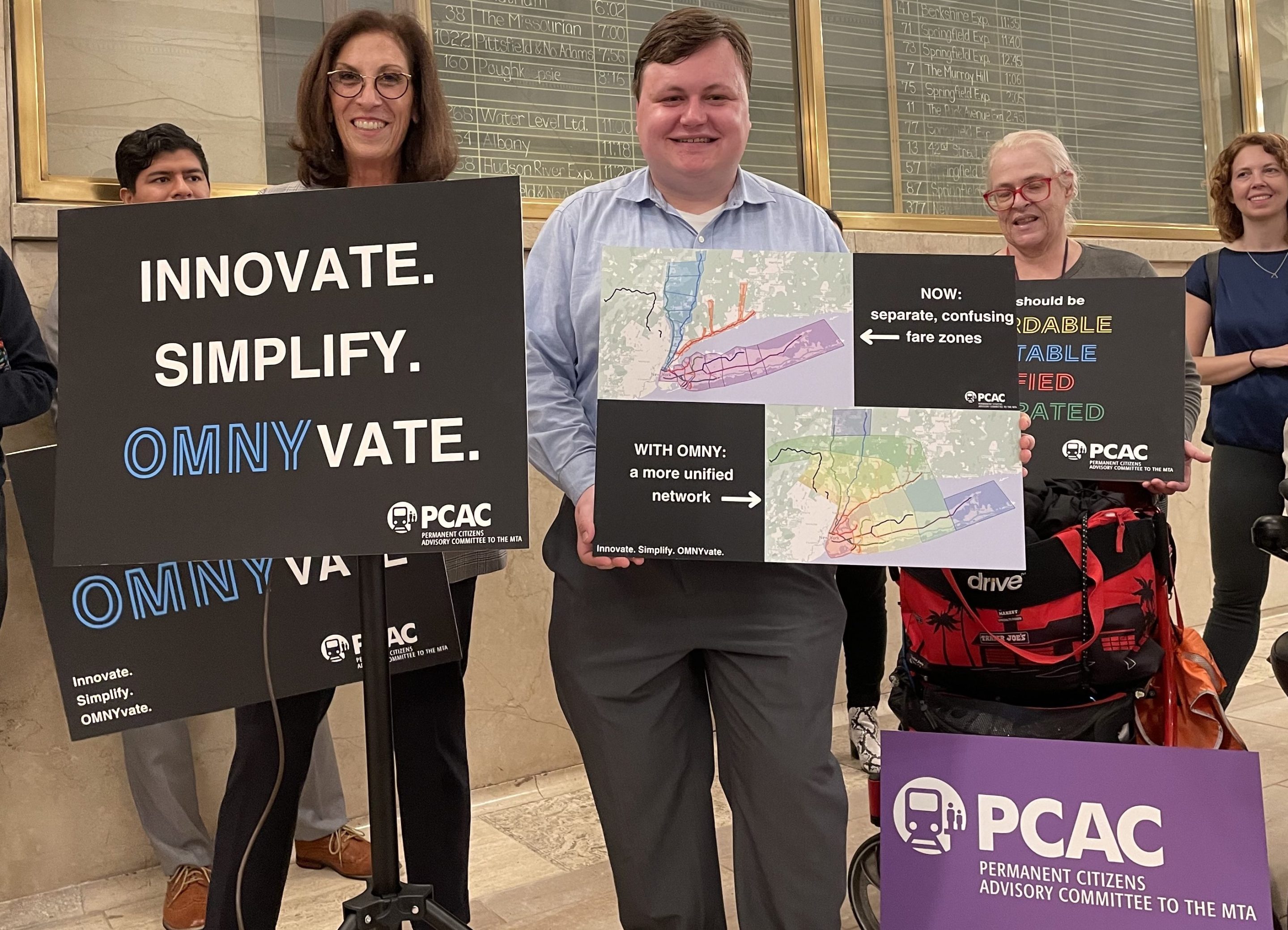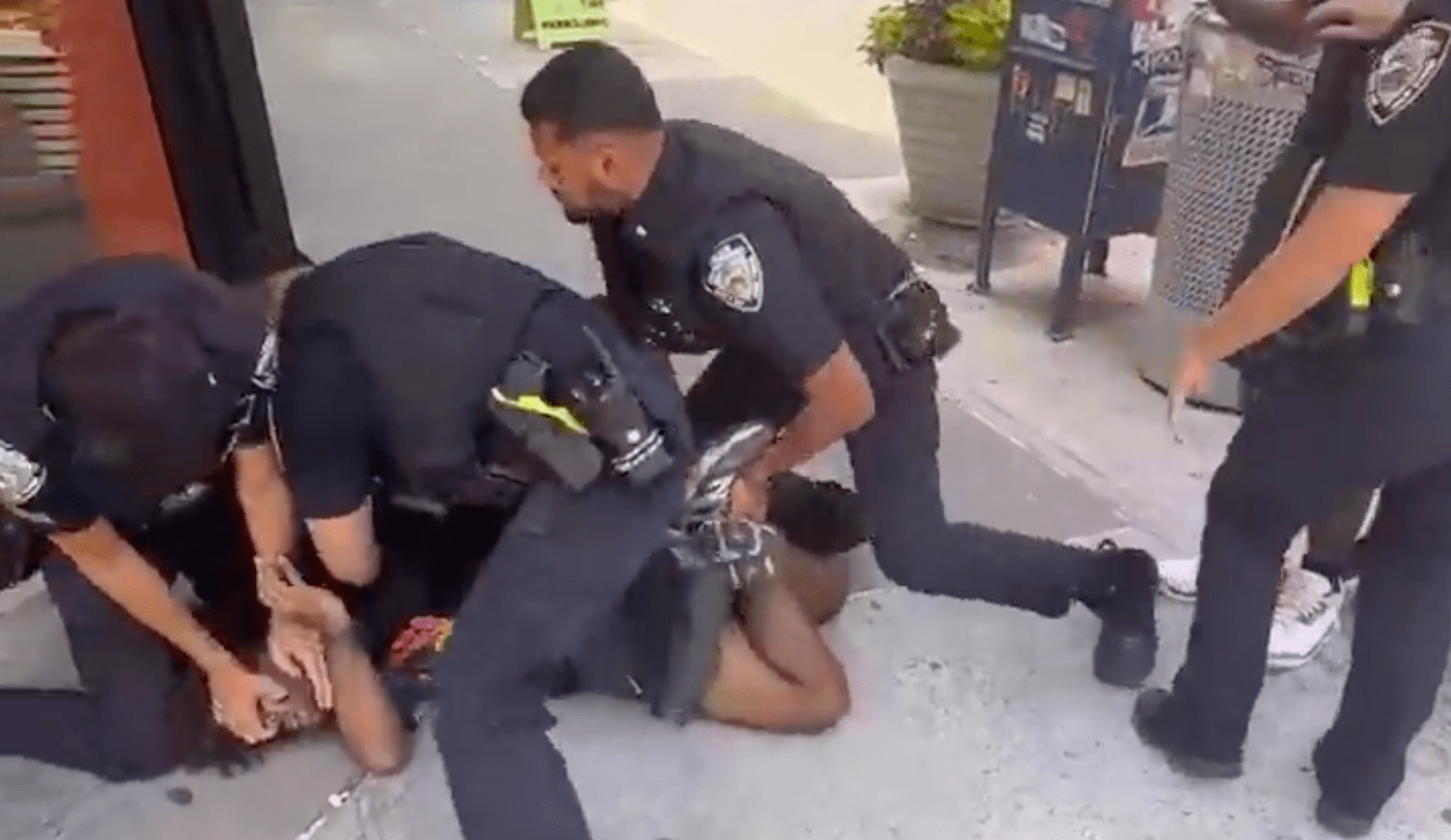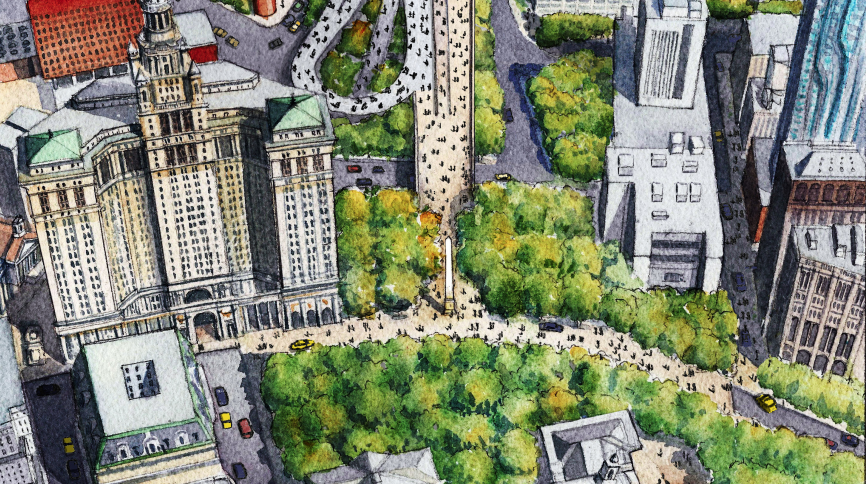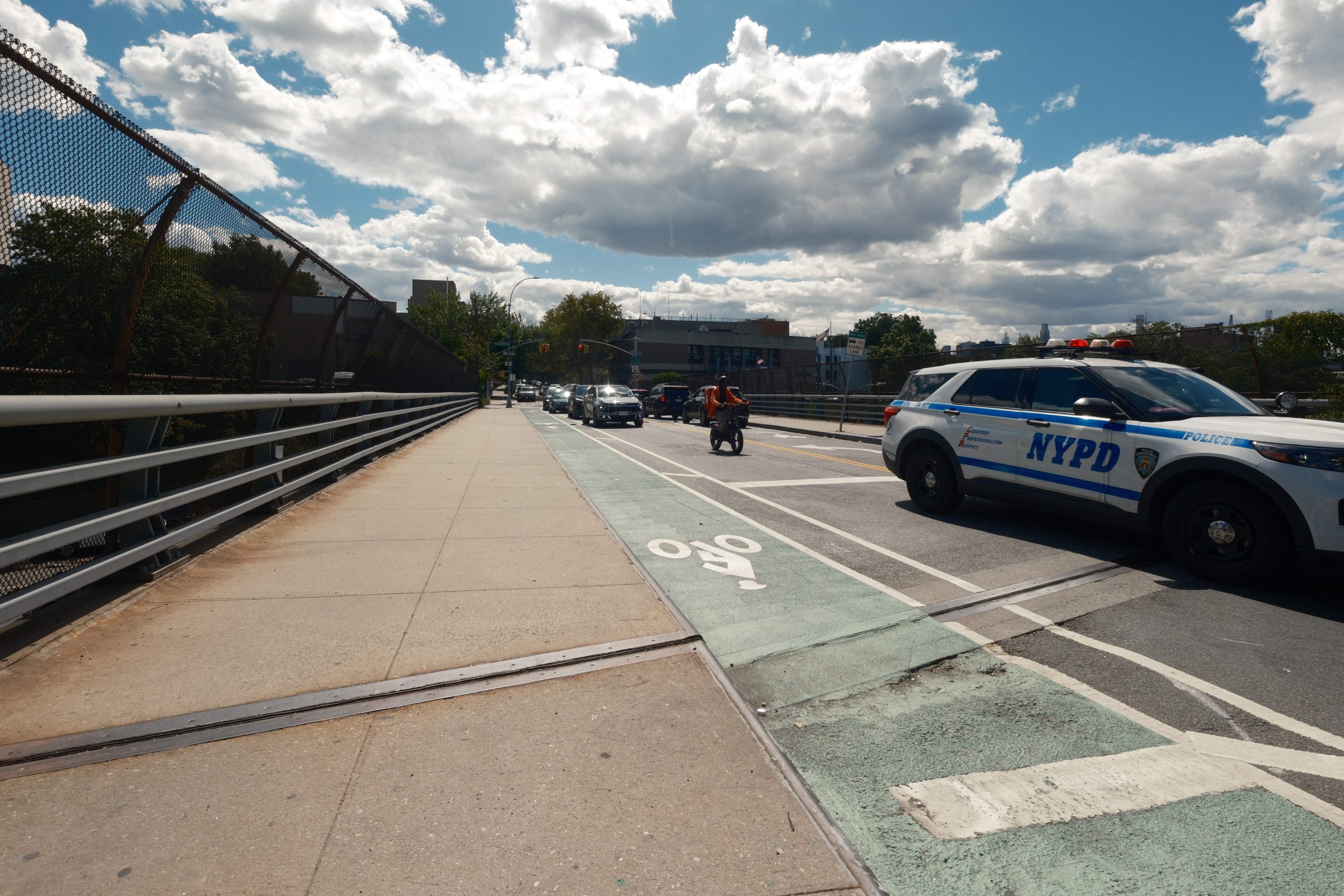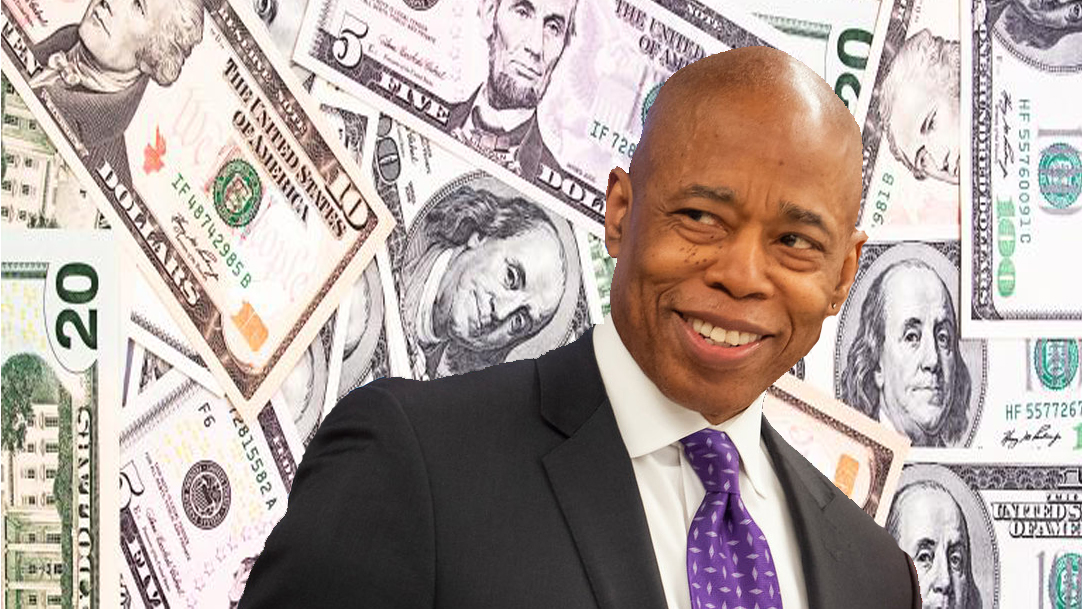This is no quick train trip.
MTA leaders could squander the potential of their new payment system, OMNY, if they don't make major changes to fare structures on Metro-North and the Long Island Rail Road, according to a new report.
The analysis from the in-house Permanent Citizens Advisory Committee to the MTA — Integrate, Simplify and OMNYvate: On Track For A Better MTA Fare Payment — calls on transit officials to harness OMNY tech to create a more unified, rational price structure for both railroads that cuts down on the number of ticket options riders must navigate to pay their fares.
The two railroads have grown closer in recent years thanks to capital projects like East Side Access and Penn Access, which will add Metro-North trains to Penn Station — but there aren't any plans now to integrate their fare structures when they activate OMNY in 2025.
The changing physical and technological landscape for commuter rails provides a good runway for the MTA to make larger and more impactful changes to its fare structure, PCAC said.
"Fare rationalization, equalizing the distances between stations by charging the same per mile — these have been talked about for such a long time," PCAC Executive Director Lisa Daglian said at a press conference on Friday at Grand Central Terminal.
"With OMNY, we're seeing the first real big change that's integrating the railroads and bringing them together, so that things finally make sense."
The addition of the LIRR to Grand Central at East Side Access, and the eventual addition of Metro-North to Penn Station with Penn Access, should open up many more potential routes for commuter rail riders.
Right now, however, the new service makes ticketing more complicated: Riders can buy "Combo Tickets" that allow them to use a single ticket for a ride that takes them on the LIRR and Metro-North. Each of the railroads has its own zone-based pricing, with more than two dozen total options — yet there's no regular per-mile fare to travel between them, the report noted.
For instance, a peak one-way ticket to Grand Central costs $13 coming from the first suburban fare zone on the LIRR — but costs $12 for riders coming from the first suburban fare zone on Metro-North.
The MTA must use OMNY to end that chaos, according to Daglian and her team — and usher in an era of a single unified fare zone from Montauk to Middletown with a common per-mile price across eight zones in the entire commuter rail area, in order to create rational and easily understood ticket prices.
In addition to cutting down on fare zones, the report argues the MTA has to use the coming of OMNY to cut down on ticket types.
Right now there are almost four dozen base types of base tickets that commuter rail riders can choose from – before even getting into time or day-based modifiers or travel direction. That system adds too much stress to both riders and for conductors, who would both benefit from simplifying things, the report said.
"Whether riders get their tickets from an app, a vending machine, or a ticket attendant, they often have over a dizen choices when it comes to the types of tickets they can buy," PCAC staff wrote.
"While conductors are tasked with performing their tasks to keep trains moving safely in a timely manner, they're also hard-pressed to be able to memorize all ticket conditions at all times."
As the MTA explores new fare approaches like Combo Ticket and City Ticket, it should use the switch to OMNY to herald in larger, rider-friendly changes advocates have spent years demanding, the report said.
For one, ticket types should be simplified, PCAC said. Riders should be able to choose between single ride, round trip, weekly or monthly passes, a 10-trip ticket, and either single-ride or weekly fares for Combo Ticket and CityTicket — the $5 off-peak, $7 peak commuter rail fare for trips that don't leave New York City. Instead of separate classes of discount tickets, an automatic half-fare discount should be applied to seniors, disabled riders or riders between 12 and 17 years old, the advocacy group suggested.
That would all be a big boost for OMNY, which has struggled in recent years since the MTA finished installing it on every bus and subway across the system.
OMNY card vending machines have yet to roll out, while physical OMNY cards remain difficult to find in drug stores and bodegas long after they went on the mark. While the MTA has enabled OMNY for recipients of reduced fare programs, the city's "Fair Fares" and student fare programs aren't yet included.
The limited footprint has led to extreme variation in OMNY usage across modes and demographics. The tech accounts for 70 percent of "regular fare" subway trips, but just 54 percent of total trips, officials said last month.
On buses, while 50 percent of revenue from single-fare trips come in via OMNY, those trips make up less than half of bus riders across the system — who are more likely to use monthly or weekly passes.
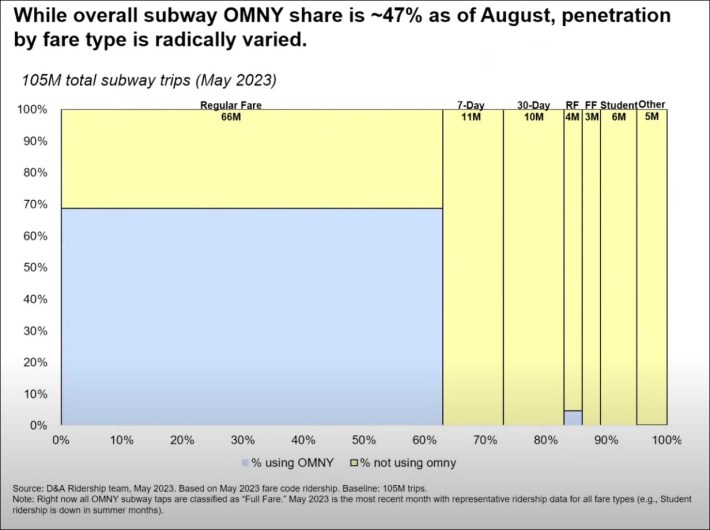
Making a big push on commuter rails could help OMNY live up to its full value.
"One Metro New York was created to really bring all of the fare payments under one fare payment system. That hasn't lived up to its potential," said Daglian.
"We think that it can. Let's look at the product vision and see how it can it can work holistically, and take advantage of the full potential because other major systems do it internationally. It's not a new concept, it's just new to us."
A spokesperson for the MTA provided a comment that did little more than reiterate the fact that OMNY exists.
"Contactless fare payment is the future of transportation, and the MTA is leading the way with OMNY by allowing customers to tap-and-pay on their own devices or bank cards saving riders time and money, offering the best deal," said MTA spokesperson Eugene Resnick.
"OMNY enhancements for commuter railroad customers are on the way, building on the success of the MTA’s TrainTime app, which makes purchasing tickets – including the first-ever cross-railroad Combo Ticket – a few swipes away."
